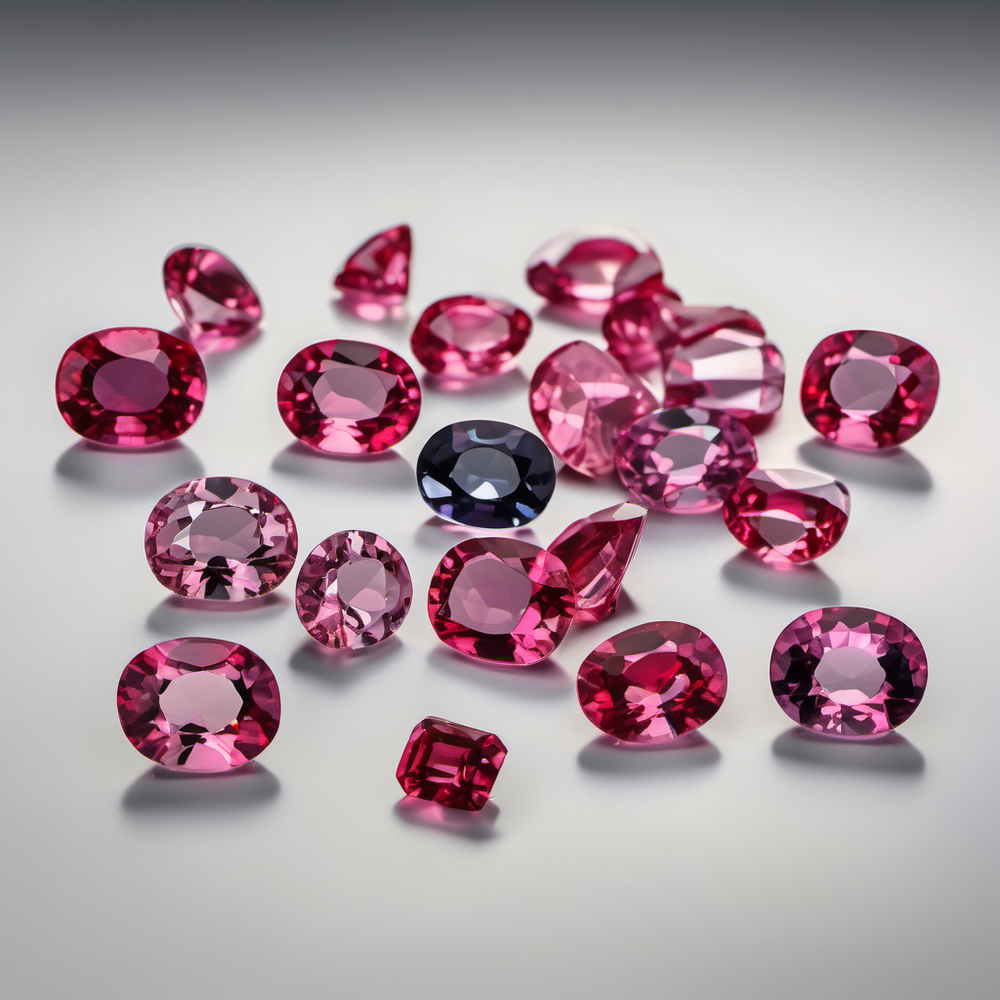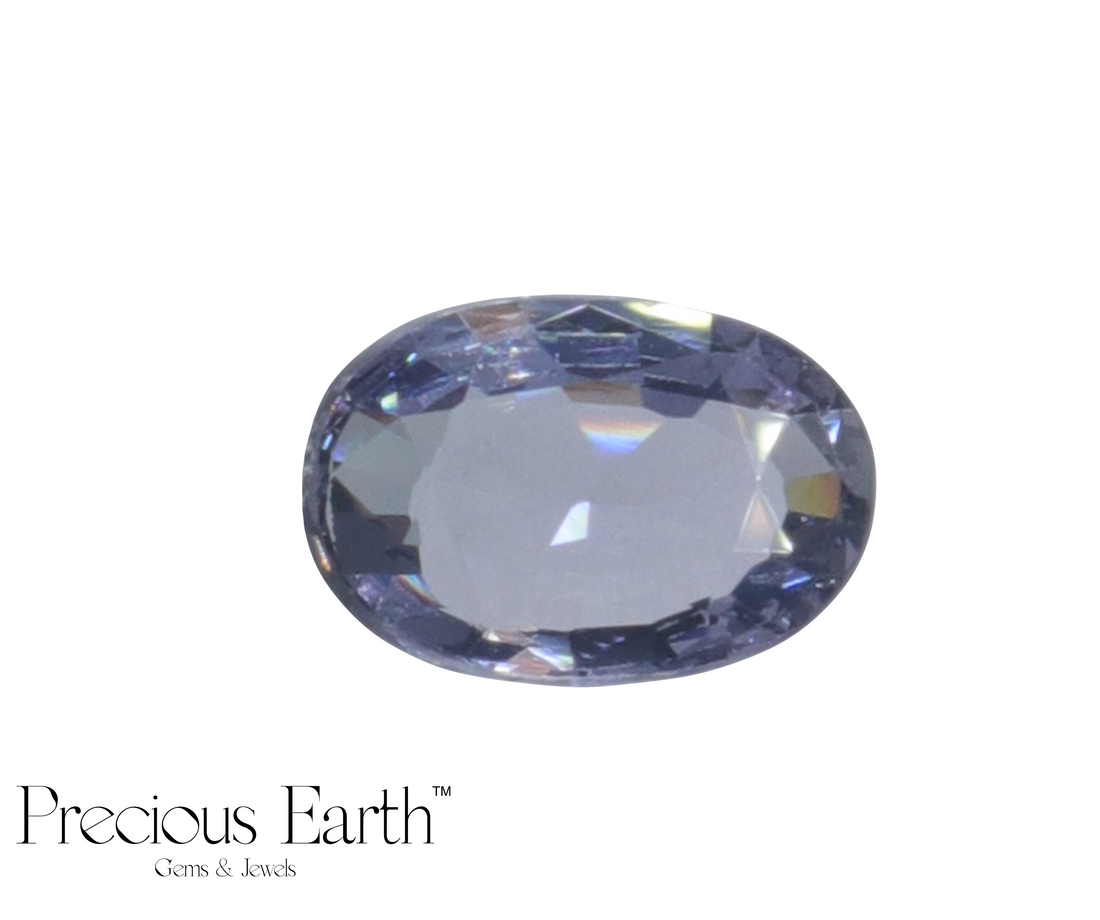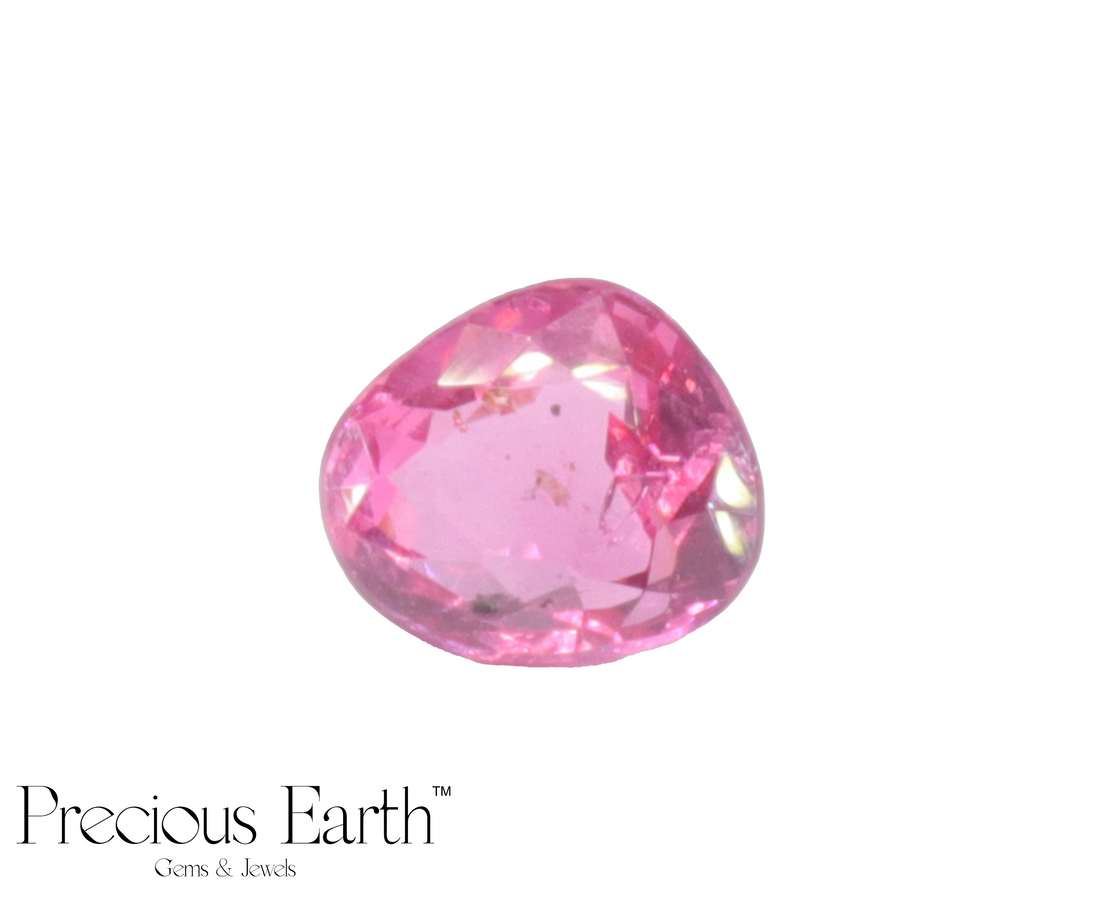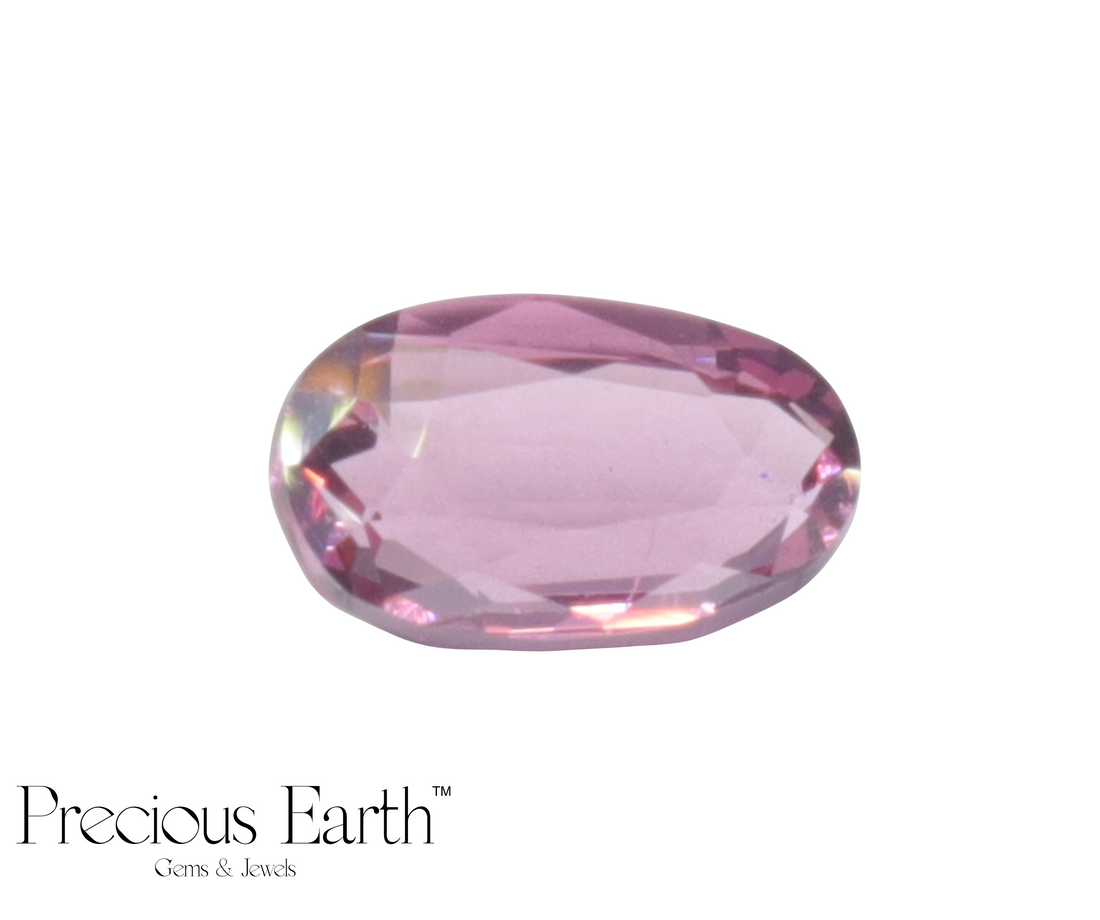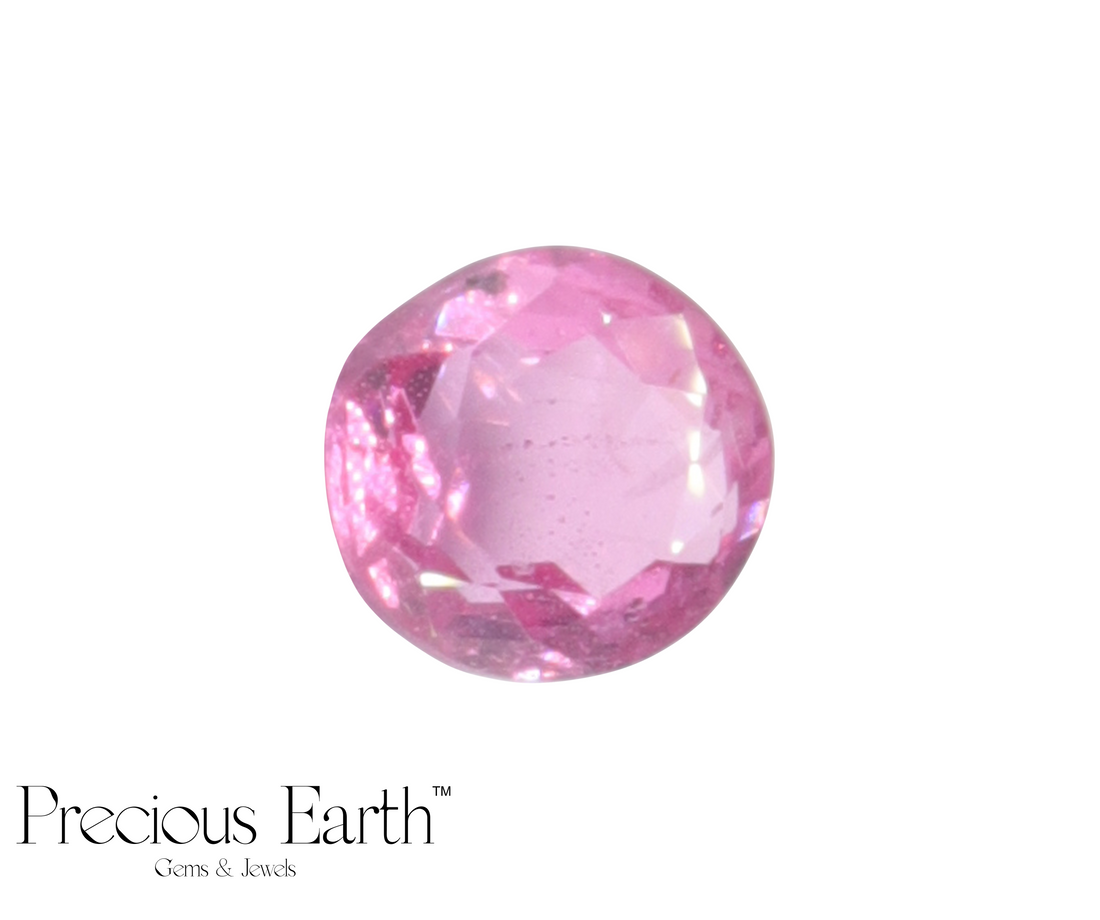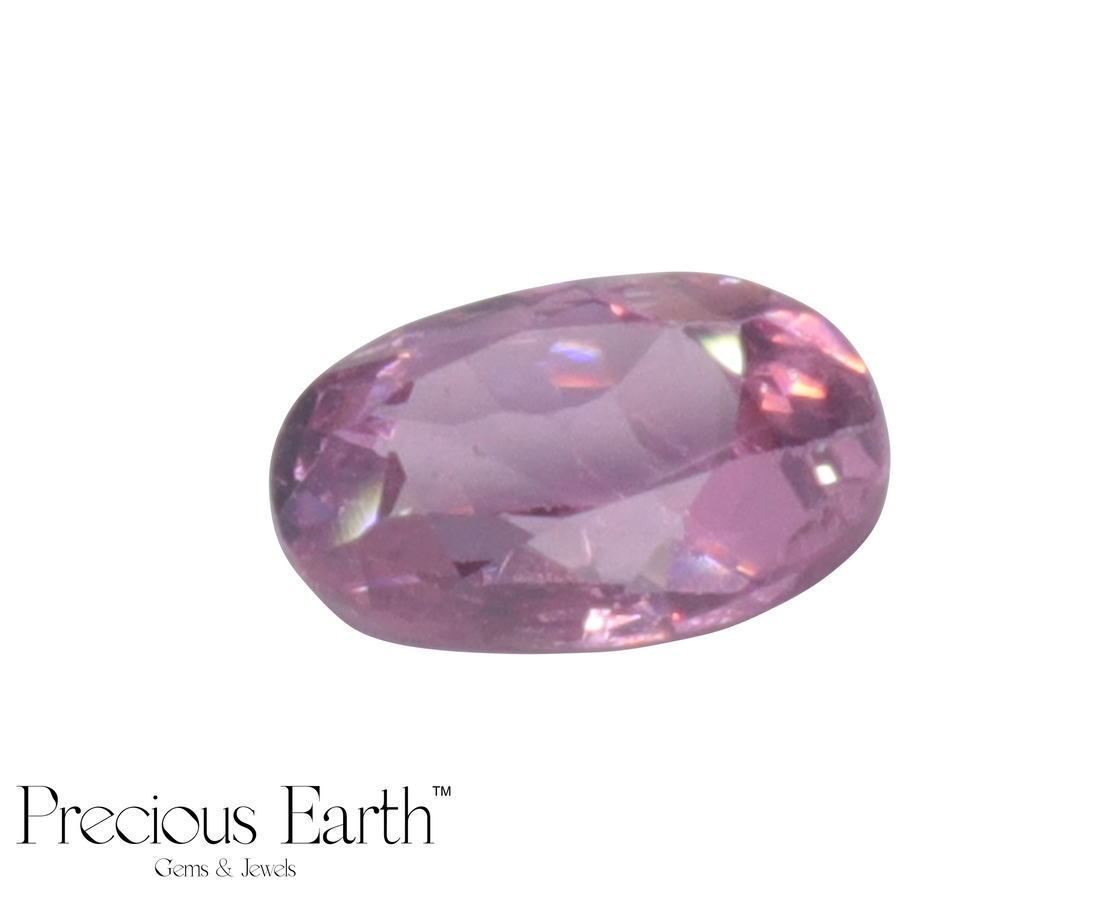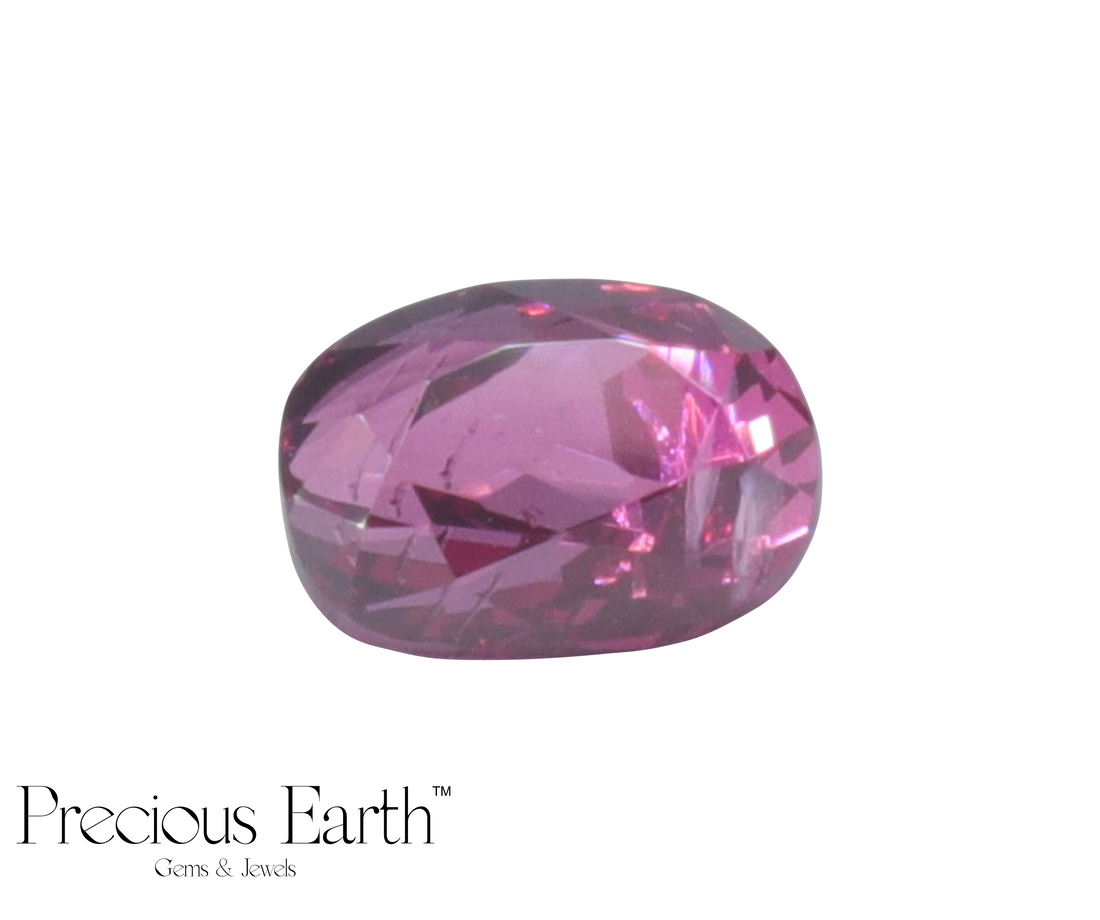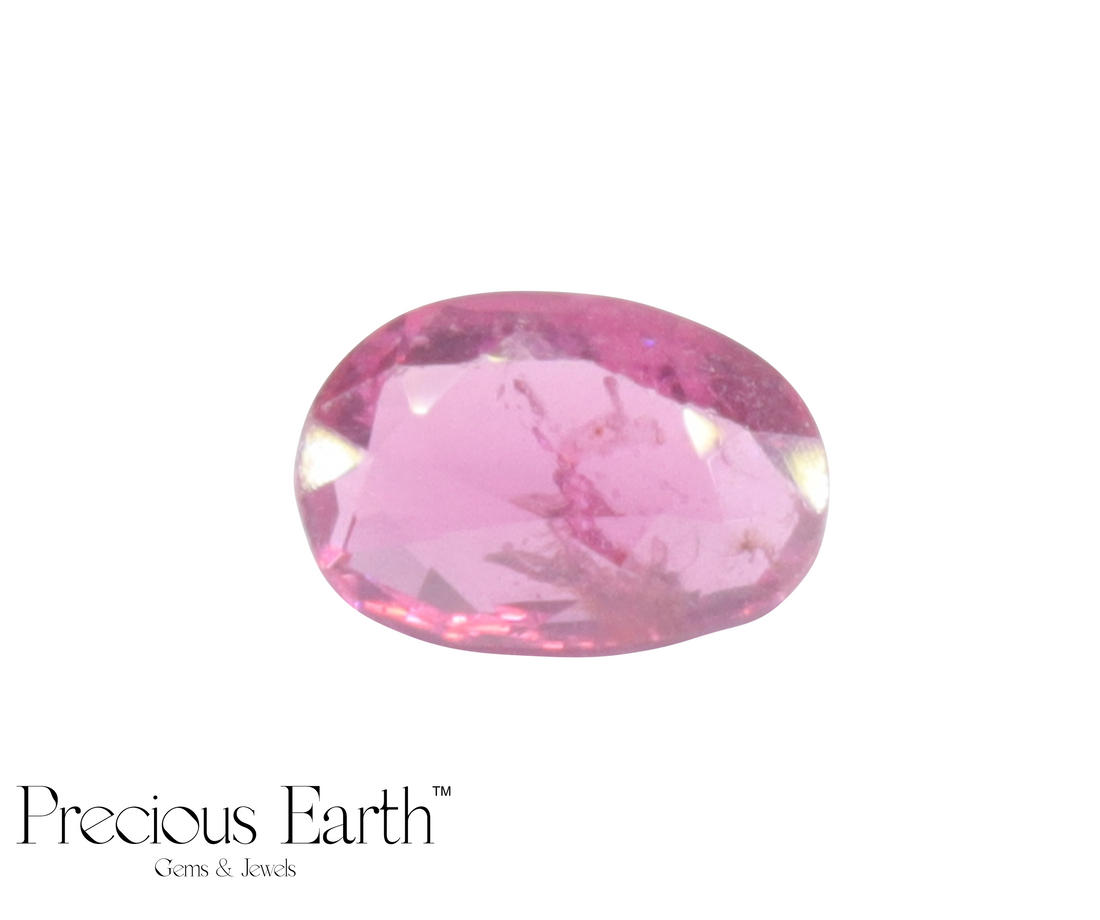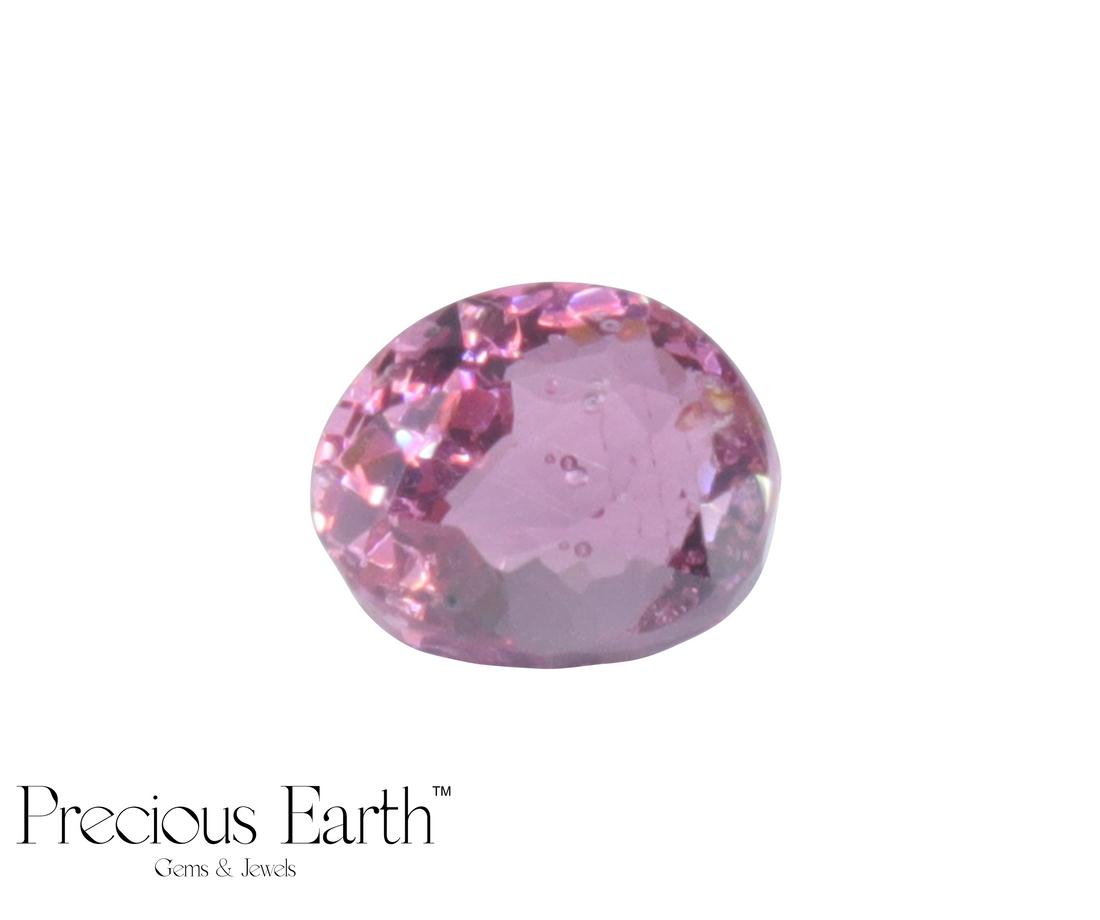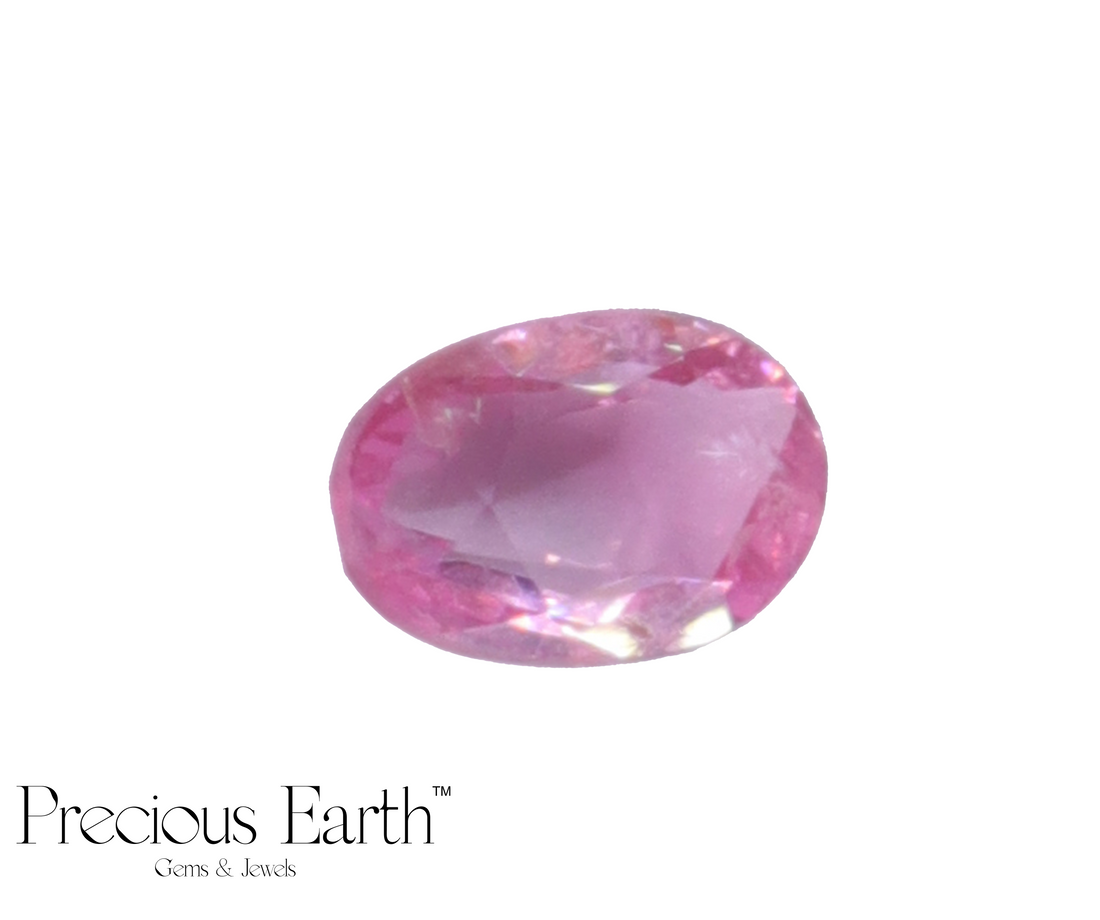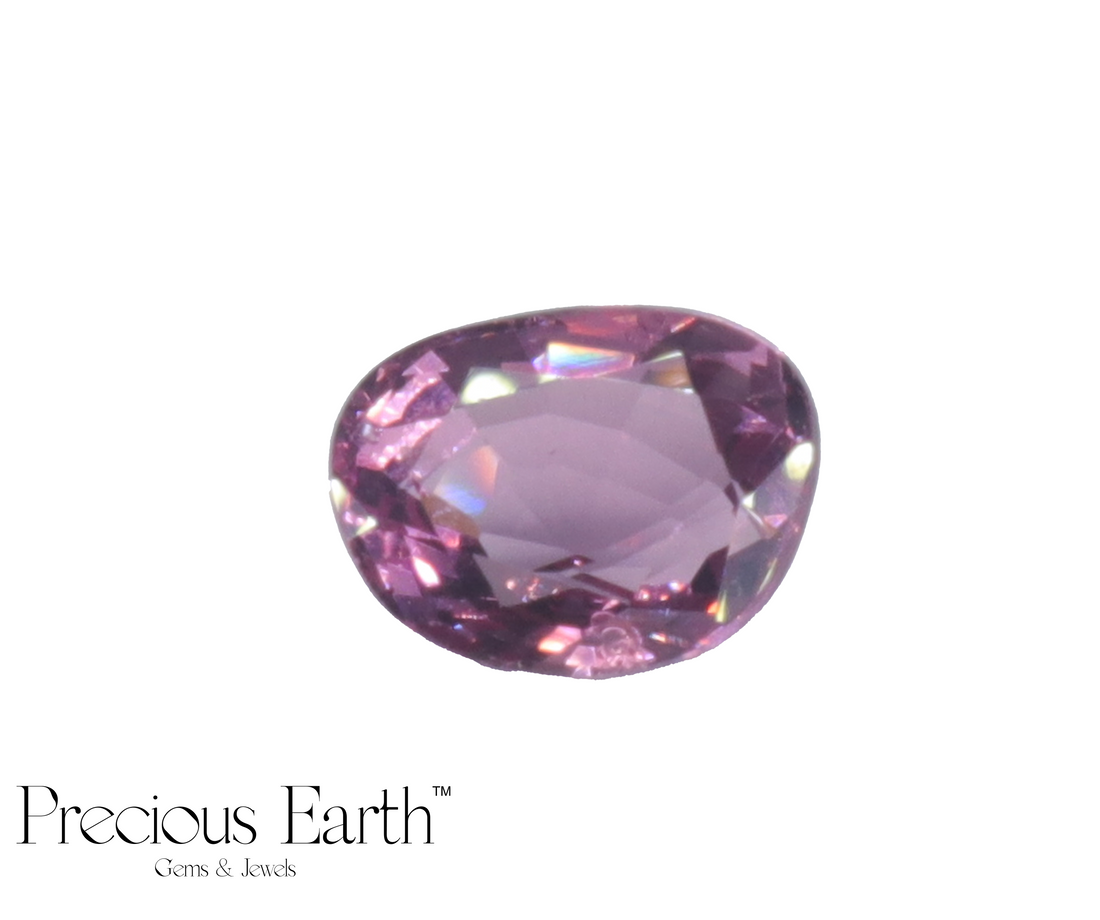This article serves as part of an ongoing series of profiles on the different varieties of precious & semi-precious gemstones. To view the entire list, click here.
Long prized for their vibrant hues and accessible price point, natural spinel gemstones, characterized by their chemical composition MgAl (magnesium aluminum) and found within tetrahedral sites—have recently experienced a resurgence of interest in the realm of jewelry design. Alongside Balas ruby, historically used to describe certain red spinels, these gemstones captivate with intense reds, blues, and pinks that rival even the rarest of gems. The allure of spinel lies not only in its striking colors but also in its intriguing history. As demand outpaces supply and mines struggle to meet market needs, its value has soared, making it a gemstone that continues to dazzle long after its discovery. This comprehensive guide unveils the colourful history and vibrant presence of spinel, delving into its intricate formation and occurrence, inclusions, factors influencing cost, astrology connections, common treatments, and the broad spectrum of colors it encompasses.

Uncut Spinels
1. Spinels - Formation & Occurrence
Spinel boasts a fascinating origin story, forged within the Earth's dynamic geological processes. 2 primary methods dominate spinel formation - metamorphism and magmatic activity. During metamorphism, intense heat and pressure transform existing rocks like limestone or mudstone. This process can cause minerals to recrystallize, with magnesium and aluminium (MgAl) ions finding themselves perfectly positioned within tetrahedral sites in the newly formed spinel structure.
The magmatic activity also plays a role. Spinel can be found in certain volcanic rocks like basalt or kimberlite pipes, formed when molten rock from the Earth's mantle cools and solidifies. Sometimes, spinel crystals that already existed deep within the mantle, containing magnesium and aluminium ions arranged in specific ways, including tetrahedral sites, get carried upwards by these molten rocks. These geological processes, along with the availability of trace elements, play a crucial role in not only spinel formation but also the diverse range of colors we see in these captivating gemstones.
Spinel exhibits a unique refractivity, displaying identical physical properties regardless of crystal lattice orientation. It features a cubic crystal system, forming octahedral crystals that resemble two joined pyramids and are commonly found in nature. Spinel has a chemical formula represented as AB2X4, with ions arranged in a cubic close-packed symmetry. The precise arrangement of ions determines the normal spinels or inverse spinel structure. Spinel crystals often have a cubic shape, with the metal ions arranged in a lattice.
In the normal spinel structure, the B metal ions occupy half of the octahedral sites, while the A metal ions occupy one-eighth of the tetrahedral sites within the lattice. The inverse spinel or spinel inversion is a variation where all A cations and half of the B cations occupy octahedral sites, with the remaining B cations in tetrahedral sites. Notably, tetrahedral spaces are smaller than octahedral sites. Examples of materials with an inverse spinel structure include Magnetite, cobalt ferrite, and nickel ferrite.
 Crystal Structure of Spinels
Crystal Structure of Spinels
2. Where Are Spinels Found?
Spinel gemstones originate within the Earth's crust and are found in numerous countries across Asia and beyond. From Afghanistan to Vietnam, gemstone deposits have been discovered in various regions. Myanmar, Sri Lanka, and Thailand are particularly renowned for spinel mining. Spinels are also found in gravel beds and within marble deposits in Sri Lanka, Tanzania, Madagascar, and Vietnam.
Furthermore, significant spinel findings have been reported in Pakistan, Afghanistan, Tajikistan, and Russia. Notably, a rare blue variety of spinel is sourced from Baffin Island in Canada.
3. The Colour Span of Spinels
The vibrant colors of these gemstones are a result of transition metal cations like chromium or cobalt, these ions occupy and form colored complexes with oxygen ligands within the crystal structure. The distribution of these cations in the tetrahedral and octahedral sites of the spinel crystal greatly influences its physical and optical properties.
Spinel gemstones exhibit a diverse array of hues, ranging from ruby-like reds to intense blues reminiscent of sapphires. Most blue spinels have a deep color that tends towards gray, sometimes with a violet undertone. Additionally, they also occur in striking shades of yellow, stunning pinks, soft lavenders, rich purples, and captivating blue-greens. Black spinel is also popular in jewelry, appealing to both men and women.
The spectrum of spinel colors is attributed to trace elements present during its formation. For instance, the presence of chromium replacing aluminum results in red spinel, while iron and cobalt contribute to blue varieties. Cobalt blues, also known as Thénard's blues, are particularly vivid and prized for their rarity. Red spinel, in particular, is highly sought after among jewelers. Neon blue spinel is exceptionally rare, and faceted specimens weighing more than a few carats are considered extraordinarily uncommon in the gemstone market.
 Color Span of Spinels
Color Span of Spinels
4. Common Inclusions in a Spinel
During spinel formation, it can trap various types of inclusions, including minerals, fluids, and negative crystals, which are small imperfections within the gem. Common inclusions include:
- Octahedral inclusion: This is within the cobalt spinel is a euhedral crystal, indicating it possesses a defined and regular crystal shape with well-formed faces. Additionally, it mirrors the spinel's octahedral crystal structure.
- Carbonates: The most prevalent type of spinel inclusion includes calcite and dolomite.
- Apatite Crystals: Apatite crystals can appear as thin needles or hexagonal prisms trapped within the geml during its formation.
- Rutile Needles: Rutile needles are also frequently found as inclusions in spinel that can enhance the visual appeal of spinel by causing a star effect known as asterism.
 Octahedral inclusion in a Burmese spinel (Source: GIA)
Octahedral inclusion in a Burmese spinel (Source: GIA)
5. Common Treatments & Enhancements of Spinels
Here are some common treatments and enhancements that a spinel may undergo:
- Fracture Filling: Surface-reaching fractures are sometimes filled to improve clarity. This involves applying an oil or resin with a refractive index similar to the gesmtone. The fluid fills cracks and gaps, reducing their appearance. It can also make the color seem more uniform.
- Heating: Controlled heating may enhance clarity by evaporating included gasses or fluids. However, it can also alter the natural color of the stone.
- Diffusion Treatment: Rarely used, diffusion introduces coloring elements to create a desired hue, especially blue tones. However, it makes the gemstone artificially colored.
- Ion Beam Treatment: A modern method employing N2-ion beams aims to better the optical properties and enhance color. But like diffusion, it produces artificial color properties rather than preserving the gemstone's natural appearance.
| Mineral | Magnesium Aluminum Oxide |
|---|---|
| Colour Span | Red, cobalt-blue, vibrant hot pink, vivid orange, etc. |
| Popular Origins | Myanmar, Sri Lanka, & Thailand |
| Mohs Hardness | 8.00 (on a scale of 10) |
| Common Treatments | Fracture Filling, Heating, Diffusion Treatment, and Ion Beam Treatment |
| Birthstone | August |
Spinels - A Quick Snapshot
6. Evaluating the Quality of a Spinel
When assessing spinel gemstones, focus on these attributes based on the 4Cs of gemstones:
- Color: Certain colors, like red, pink, orange, and blue, are prized for their rarity and beauty. Red is the most desirable, followed by vibrant pink, orange, and blue hues. Other attractive but less common colors include violet, purple, and lavender. Pure medium to dark red tones are considered the finest. A high-quality 5-carat red spinel can fetch around 10% of the price of a comparable ruby.
- Clarity: Spinel specimens with minimal to no visible flaws are highly sought after, although finding such gems is rare. Inclusions significantly impact value, with stones displaying vibrant colors and minimal imperfections commanding premium prices. Flawless spinels, without visible inclusions, are more valuable than those with detectable flaws. Prominent inclusions decrease value, although some stones feature unique inclusions resembling human fingerprints, enhancing their allure and value.
- Cut: Spinel is cut into various shapes, with ovals and cushions being popular choices. Due to its rarity, high-quality spinel rough is custom-cut to maximize carat weight rather than conforming to standard industry dimensions. Meticulous cutting enhances color and minimizes imperfections, increasing value. Intricately faceted spinels in shapes like emerald, square, and rectangle fetch higher prices compared to common shapes.
- Carat weight: Prices increase significantly with larger sizes, especially for fine red, pink, and blue specimens exceeding 5 carats.
7. How Much Does Spinel Cost?
Spinel gemstones are priced between $25 to $780 per carat for standard qualities. Those that display exceptional color and clarity may even be prices in the range of thousands of dollars per carat. In India, spinel's weight is traditionally measured in Rattis rather than the standard Carats. Fortunately, the conversion from Rattis to Carats is straightforward (1 ratti = 0.91 carats), simplifying the process when purchasing spinel gemstones. You can use Precious Earth's versatile carat converter here.
8. Spinel in Astrology
In Western astrology, Spinel is recommended as the birthstone for Virgo signs. Those seeking a protective charm boasting beauty and hardness akin to Sapphire and Ruby can confidently opt for a natural Spinel gemstone.
This stone is revered as the gemstone of revitalization, offering wearers a means to destress and recharge in all aspects of life. Its healing properties are reputed to instil a sense of calm in both body and soul. Therefore, it serves as an excellent gemstone for individuals enduring prolonged and draining work hours.
- Emotional Healing: Spinel is thought to be helpful for emotional healing. It is said to promote feelings of forgiveness, compassion, and acceptance and to help individuals let go of past hurts and move forward with clarity and resilience.
- Chakra Alignment: Some practitioners believe this gem can help balance and align the chakras. The chakras are the energy centers in the body that are believed to correspond to different organs and emotions. When the chakras are balanced, it is believed that a person will experience good health and well-being.
- Detoxification: Many cite this gem has detoxifying effects that remove toxins and impurities from the body.
As we explore the captivating world of spinels, their kaleidoscopic hues and remarkable resilience leave us enchanted. We explored they types of spinel structures, such as normal and inverse spinel structures. From fiery reds to mesmerizing blues, these gems have adorned cultures across the globe, carrying stories of rarity, passion, and unparalleled beauty. Yet, as we've seen, spinels are more than just dazzling gemstones; they are tangible reminders of the Earth's wondrous ability to create breathtaking treasures from the most humble of beginnings.
If you're seeking to embrace the timeless allure of these gemstones, look no further than Precious Earth's exquisite spinel collection. Meticulously curated, each piece is a testament to nature's artistry, inviting you to adorn yourself with the very essence of the Earth's splendour. Indulge in the vibrant hues, flawless cuts, and rich histories that have made spinels a coveted treasure for millennia.

